i want to solve the following ode
KT + CT' = Q
to given example Data is my code below
import numpy as np
import scipy as sp
# Solve the following ODE
# K*T + C*T' = Q
# T' = C^-1 ( Q - K * T )
T_start=sp.array([ 151.26, 132.18, 131.64, 146.55, 147.87, 137.87])
K = sp.array([[-0.01761969, 0.02704873, 0.00572222, 0. , 0. ,
0. ],
[ 0.02704873, -0.03546941, 0. , 0. , 0.00513177,
0. ],
[ 0.00572222, 0. , 0.03001858, -0.04752982, 0. ,
0.02030505],
[ 0. , 0. , -0.04752982, 0.0444405 , 0.00308932,
0. ],
[ 0. , 0.00513177, 0. , 0.00308932, 0.02629577,
-0.01793915],
[ 0. , 0. , 0.02030505, 0. , -0.01793915,
0.00084506]])
Q = sp.array([ 1.66342077, 0.16187956, 0.65115035, 0.71274755,2.54614269, 0.13680399])
C_invers = sp.array([[ 3.44827586, 0. , 0. , 0. , 0. ,
-0. ],
[ 0. , 1.5625 , 0. , 0. , 0. ,
-0. ],
[ 0. , 0. , 2.63157895, 0. , 0. ,
-0. ],
[ 0. , 0. , 0. , 2.17391304, 0. ,
-0. ],
[ 0. , 0. , 0. , 0. , 1.63934426,
-0. ],
[ 0. , 0. , 0. , 0. , 0. ,
2.38095238]])
time = np.linspace(0, 20, 10000)
#T_real = sp.array([[ 151.26, 132.18, 131.64, 146.55, 147.87, 137.87]])
def deriv(T, t):
return sp.dot( C_invers, Q - np.dot(K, T) )
T_sol = sp.integrate.odeint(deriv, T_start, time)
i know that the result is
sp.array([ 151.26, 132.18, 131.64, 146.55, 147.87, 137.87])
the solution is "stable" if and only if i use this as the T_start condition

but if i change my start condition for example to
T_start=sp.array([ 0, 0, 0, 0, 0, 0])
it won't converge im getting the following result:

where is my fault? Negative values make no sense for my system :/ Can you help me? thanks ;)